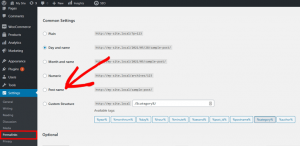— May 4, 2018

darkmoon1968 / Pixabay
As Influencer Marketing becomes a more pervasive channel to drive sales, so too does the need for safety. In response to recent controversies surrounding inappropriate content, social media platforms like Facebook and YouTube have unveiled refreshed community guidelines to ensure the safety of their audience.
Does this herald the end of the quirky, edgy content that made creators so beloved in the first place? Absolutely not! All it takes is for both influencers — and the brands they work with — to be more conscious of the rules as they produce content.
Here’s a quick breakdown of the relevant rules that creators and brands should be paying attention to as they post across major influencer marketing channels:
- Post only photos that are yours
- Whether you’re re-sharing or posting your own, make sure you’re super clear on copyright laws surrounding work from other people
- Post photos and videos that are appropriate for a diverse audience.
- This is where things can get a bit tricky, especially for influencers that like to express themselves through nudity. Essentially: avoid content that could be considered sexual such as intercourse, genitals, and close ups of the buttocks. Female nipples are forbidden with the exception of post-mastectomy scars or breastfeeding. However, if it’s a painting or sculpture, go for it! Essentially: the burden is on the creator to strive to be as respectful to the sensibilities of as many people as possible.
- Foster meaningful and genuine interactions.
- Be like Eminem, no fake friends or followers. For creators: the temptation might be great to purchase fake followers in order to be eligible for platforms like Grapevine — however — it’s not worth damaging your credibility with brands.
- Follow the law.
- This one is pretty self-explanatory. No posts that praise terrorist groups, organized crime, or hate groups. Posts that promote online gambling or games of skill that have a cash payout need written permission before posting.
Facebook just unveiled a massive document with some new rules more explicitly defining objectionable content. What brands and influencers should be focusing on is the question of safety. Those are in the following categories:
- Intellectual Property
- Same thing as with Instagram, just make sure the content you’re publishing abides by IP rights and the terms of service.
- Suicide and Self Injury
- Facebook removes content that depicts suicide or self-harm. More specifically, self-injury means any content that depicts intentional self-harm, including eating disorders. However, that doesn’t mean creators can spread awareness about these difficult issues with content that engenders thoughtful conversation.
- Hate Speech
- Facebook defines hate speech as attacks on a person based on their “protected characteristics” such as: race, ethnicity, national origin, religious affiliation, sexual orientation, sex, gender, gender identity, and serious disability or disease. Sometimes creators may share their content in a self-referential or empowering way to provide humor or social commentary. This is fine as long as influencers make an effort to indicate their intent.
- Facebook separates attacks into three tiers:
- Tier 1: Tier 1 consists of content that includes dehumanizing speech (such as comparing someone to filth/feces). Mocking the victims of hate crimes is also included here.
- Tier 2: Tier 2 includes everything in Tier 1 but also includes statements implying physical, mental, or moral inferiority. Expressions of contempt such as “I hate” or “x [protected characteristic] is disgusting” applies here too.
- Tier 3: Tier 3 includes everything in Tier 1 and Tier 2 but adds statements that explicit statements segregating someone based on the protected characteristics listed above. Obviously, avoid slurs as well.
- Facebook defines hate speech as attacks on a person based on their “protected characteristics” such as: race, ethnicity, national origin, religious affiliation, sexual orientation, sex, gender, gender identity, and serious disability or disease. Sometimes creators may share their content in a self-referential or empowering way to provide humor or social commentary. This is fine as long as influencers make an effort to indicate their intent.
- Facebook’s restrictions on nudity is a little bit more nuanced than Instagram’s. While restrictions on genitalia and the buttocks remain the same, sexual activity can be portrayed if it is for educational, humorous, or satirical purposes. Interestingly, Facebook will allow nudity if there’s clear intent — such as raising awareness for a cause — behind it.
- Facebook is pretty concerned about commercial spam. Don’t use misleading info to drive clicks, shares, likes. Avoid clickbait as much as possible.
YouTube
Youtube just took down over 3 million accounts for objectionable content. Here’s what you can do to ensure that your content remains kosher:
- Context is key
- Because of the nature of video content, YouTube places a large value on the context of content. Be explicit about context, especially if content includes graphic imagery. Properly tag and provide detailed descriptions of your content so your content has a higher chance of remaining published in case it gets flagged.
- Hateful Speech
- YouTube has similar “protected categories” that Facebook has when it comes to hate speech. These categories are race, ethnicity, national origin, religious affiliation, sexual orientation, sex, gender, gender identity, and disability. YouTube also adds veteran status here.
- Harmful or Dangerous Content
- This is what got folks like PewDiePie and Logan Paul in trouble. When creating content, understand that millions of people of all ages are watching. Yes, it’s true that being edgy causes clicks. However, it’s also true that you can still be edgy while being conscious of how your audience might interpret your actions. Again: context is king.
- Spam, deceptive practices & scams policies
- YouTube cares a lot about authenticity. No one likes spam. So make sure that whenever you upload a video to not use misleading thumbnails, descriptions, or metadata. Remember: YouTube is the second largest search engine! Think about your SEO goals.
- Copyright
- Educate yourself on YouTube’s copyright center. There’s lots of content aggregation on YouTube — which can be fine! Just make sure you’re authorized to use the content you’re posting if it doesn’t belong to you. This can include music tracks or content from other creators.
Of all the platforms out there, Twitter probably has the most laissez-faire approach to enforcing their rules. Some of the big things that will definitely trigger at least a suspension:
- Context
- Moreso than YouTube, Twitter views potentially abusive or hateful content on a contextual basis. While a tweet may be seen as abusive in isolation, Twitter considers the larger conversation. Furthermore, Twitter puts a lot more consideration on behavior.Twitter’s only real rule is not antagonizing users based on their “protected categories,” race, ethnicity, national origin, sexual orientation, gender, gender identity, religious affiliation, age, disability, or serious disease. Other than that, Twitter’s rules are the most relaxed.
Digital & Social Articles on Business 2 Community
(84)







